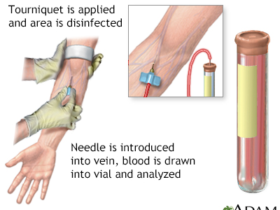Sciatica is a common condition that affects millions of people worldwide, causing pain, discomfort, and sometimes severe disability. The last stages of sciatica, in particular, can be daunting for those experiencing it, as symptoms often intensify, leading to concerns about long-term health and recovery. Understanding these final stages, the signs to look out for, and the pathways to recovery is essential for managing the condition effectively and regaining quality of life. This article delves into the intricacies of the last stages of sciatica, offering a comprehensive guide to symptoms, treatment options, and recovery strategies.

Understanding Sciatica: A Brief Overview
Sciatica refers to pain that radiates along the path of the sciatic nerve, which branches from your lower back through your hips and buttocks and down each leg. Typically, sciatica affects only one side of your body. It most commonly occurs when a herniated disk, bone spur on the spine, or spine narrowing compresses part of the nerve. This can cause inflammation, pain, and often some numbness in the affected leg.
Sciatica can be classified into acute and chronic forms. Acute sciatica is a temporary condition that typically resolves within a few weeks. Chronic sciatica, however, can persist for a more extended period and may require more intensive treatment.
Symptoms in the Last Stages of Sciatica
The symptoms of sciatica often become more pronounced and severe in the final stages. Understanding these symptoms can help recognize the condition’s progression and seek appropriate treatment.
Severe Pain
One of the hallmark signs of the last stages of sciatica is severe pain. This pain typically starts in the lower back and radiates down the leg, often reaching the foot. It can be described as sharp, shooting, or burning. The intensity of the pain can be debilitating, making it difficult to perform daily activities.
Numbness and Weakness
As sciatica progresses, numbness and muscle weakness in the affected leg or foot may become more apparent. This occurs because the sciatic nerve controls the muscles in the back of your knee and lower leg. When the nerve is compressed or irritated, it can result in a loss of sensation or strength, making it challenging to move or even stand for long periods.
Loss of Bowel or Bladder Control
In rare and severe cases, sciatica can lead to a loss of bowel or bladder control, a condition known as cauda equina syndrome. This medical emergency requires immediate attention, as it can cause permanent damage if not treated promptly.
Chronic Tingling or Burning Sensation
Patients in the last stages of sciatica often report a persistent tingling or burning sensation in the affected leg. This is due to the ongoing irritation or damage to the sciatic nerve. This sensation can be constant or intermittent but is generally more pronounced during activities or rest periods.
Causes of Severe Sciatica
Understanding the causes behind the progression to the final stages of sciatica can help manage and potentially prevent the condition. The following are common causes:
Herniated Discs
One of the most common causes of severe sciatica is a herniated disc. This occurs when the soft center of a spinal disc pushes through a crack in the more rigid exterior casing. This herniation can press on the sciatic nerve, causing severe pain and other symptoms.
Spinal Stenosis
Spinal stenosis, or the narrowing of the spinal canal, can also compress the sciatic nerve. This narrowing can be due to the natural aging process, where the spine degenerates and loses its structure, leading to nerve compression.
Piriformis Syndrome
The piriformis muscle is a small muscle located deep in the buttocks. If this muscle spasms or becomes tight, it can compress the sciatic nerve, leading to pain and other sciatica symptoms. This condition is known as piriformis syndrome and can be particularly challenging to diagnose and treat.

Degenerative Disc Disease
As we age, the discs in our spine can degenerate and lose their cushioning ability. This can lead to increased pressure on the sciatic nerve and the development of severe sciatica symptoms.
Diagnosis of Advanced Sciatica
Accurate diagnosis is crucial in the last stages of sciatica to determine the appropriate treatment plan. A thorough diagnosis typically involves:
Physical Examination
A healthcare provider will conduct a physical examination to assess the severity of the symptoms and check for signs of muscle weakness, loss of sensation, or abnormal reflexes.
Imaging Tests
Imaging tests such as X-rays, MRI, or CT scans are often used to get a detailed view of the spine and identify the exact cause of the nerve compression. These tests can reveal herniated discs, bone spurs, or other abnormalities.
Electromyography (EMG)
An EMG test can help determine how well the muscles and nerves function. It measures the electrical activity in the muscles and can identify nerve damage or compression.
Treatment Options for Severe Sciatica
Treatment for the last stages of sciatica aims to relieve pain, reduce inflammation, and improve function. Options include both conservative and surgical approaches.
Conservative Treatments
Physical Therapy
Physical therapy is often recommended to strengthen the muscles supporting the spine, improve flexibility, and reduce pain. A physical therapist can design a customized exercise program to address the patient’s patient’s specific needs.
Medications
Pain relievers, anti-inflammatory drugs, and muscle relaxants can help manage severe sciatica symptoms. In some cases, steroid injections may reduce inflammation around the affected nerve.
Alternative Therapies
Alternative therapies such as acupuncture, chiropractic care, and massage therapy can also provide relief for some individuals. These treatments focus on relieving pressure on the sciatic nerve and improving overall spinal health.
Surgical Treatments
In cases where conservative treatments fail to provide relief, surgical options may be considered. The type of surgery depends on the underlying cause of sciatica.
Discectomy
A discectomy involves removing the part of the herniated disc that is pressing on the sciatic nerve. This procedure can be done using minimally invasive techniques, which reduce recovery time and minimize complications.
Laminectomy
A laminectomy involves removing part of the vertebrae, called the lamina, to create more space for the spinal cord and nerves. This procedure can help relieve pressure on the sciatic nerve caused by spinal stenosis.
Spinal Fusion
In severe cases of degenerative disc disease or instability in the spine, spinal fusion surgery may be necessary. This procedure involves fusing two or more vertebrae to stabilize and reduce nerve compression.
Recovery and Rehabilitation
Recovery from severe sciatica can be a lengthy process, requiring patience and adherence to a comprehensive rehabilitation plan.
Post-Surgical Recovery
If surgery is required, the recovery period can vary depending on the type of surgery and the individual’s overall health. Physical therapy is often crucial to post-surgical recovery, helping patients regain strength and mobility.
Lifestyle Modifications
Making specific lifestyle changes can significantly aid in the recovery process and prevent the recurrence of sciatica. These modifications may include:
- Maintaining a Healthy Weight: Excess weight can strain the spine and exacerbate sciatica symptoms.
- Regular Exercise: Regular low-impact exercises such as walking, swimming, or yoga can help strengthen the muscles supporting the spine and improve flexibility.
- Proper Ergonomics: Ensuring that your workstation is ergonomically designed can help reduce strain on your back and prevent the recurrence of sciatica.
- Good Posture: Practicing good posture, whether sitting or standing, can alleviate pressure on the spine and reduce the risk of sciatica flare-ups.
Mental Health Considerations
Chronic pain can take a toll on mental health, leading to conditions such as depression and anxiety. Addressing these aspects as part of the overall treatment plan is essential. Cognitive-behavioral therapy (CBT), mindfulness practices, and support groups can be beneficial in managing the psychological impact of chronic pain.

Conclusion
The last stages of sciatica can be particularly challenging, marked by severe pain, numbness, and potential complications such as loss of bowel or bladder control. Understanding the symptoms, causes, and treatment options is crucial for managing the condition effectively and achieving a successful recovery. Individuals can find relief and regain their quality of life through conservative treatments, surgical intervention, or a combination of both. By adhering to a comprehensive recovery plan and making necessary lifestyle modifications, it is possible to overcome the final phase of sciatica and move towards a pain-free future.














Got a Questions?
Find us on Socials or Contact us and we’ll get back to you as soon as possible.